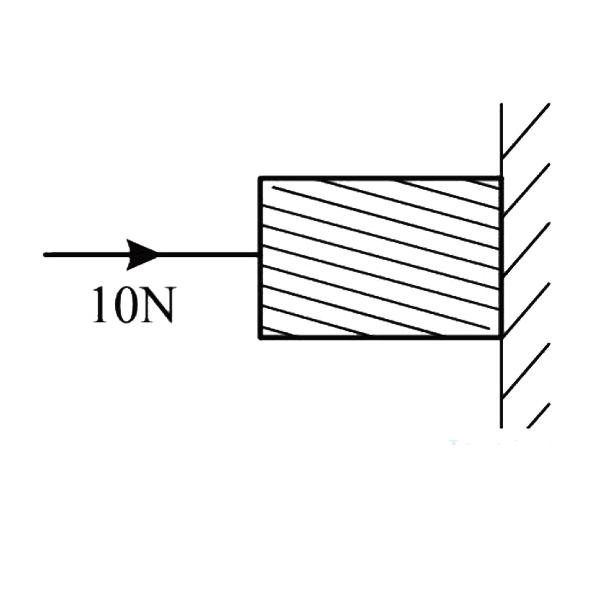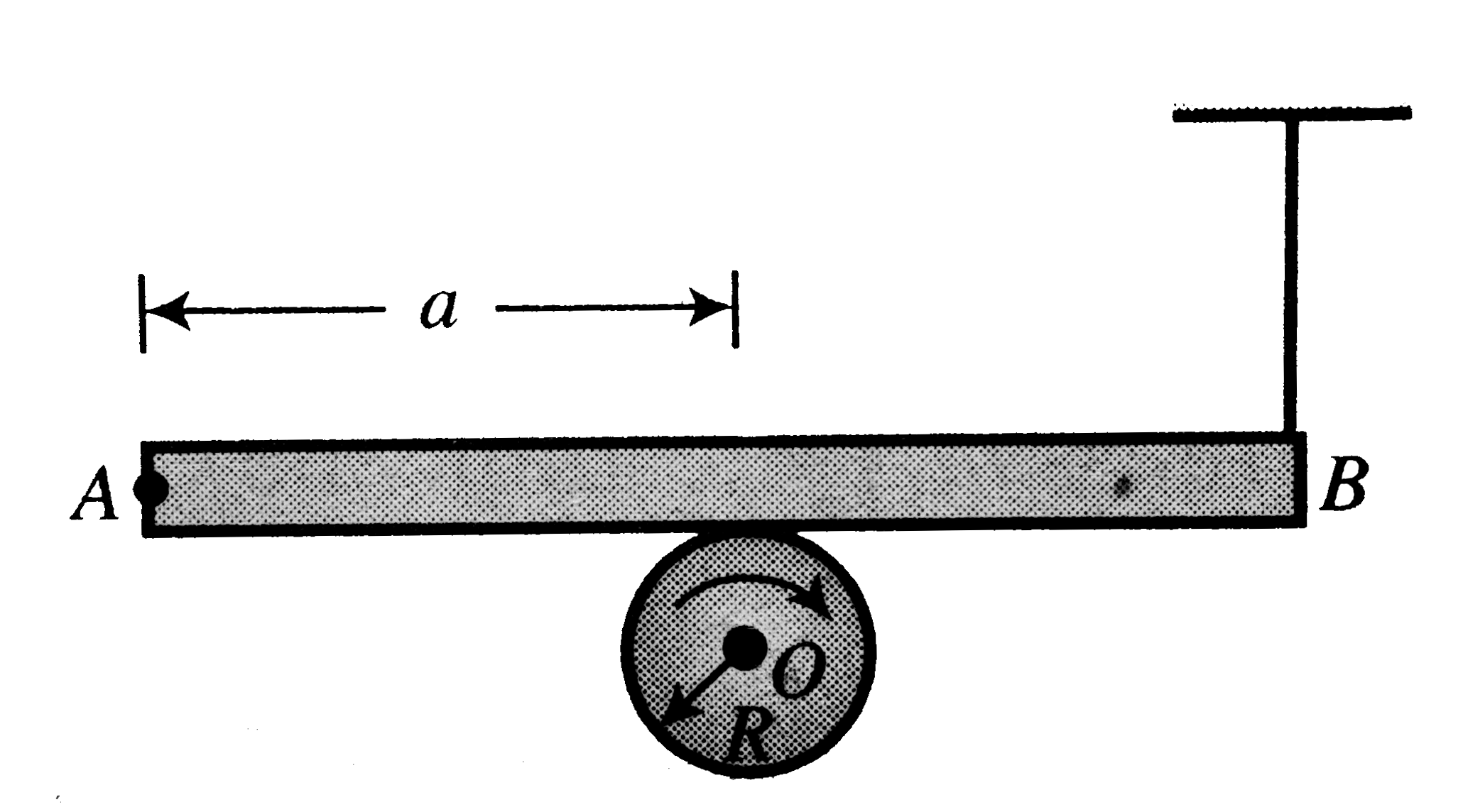A grinding machine whose wheel has a radius of is rotating at 2.5 rev/sec. A tool to be shar-pened is held against the wheel with a force of 40N. If the coefficient of friction between the tool and wheel is 0.2, power required is
40 W
4 W
8 W
10 W
The correct Answer is:A
To solve the problem, we will follow these steps:
Step 1: Convert the angular velocity from revolutions per second to radians per second.
Given that the wheel rotates at 2.5 revolutions per second, we can convert this to radians per second using the conversion factor 2π radians per revolution.
ω=2.5rev/sec×2πrad/rev=5πrad/sec
Step 2: Calculate the frictional force.
The frictional force f can be calculated using the formula:
f=μ⋅N
where:
- μ is the coefficient of friction (0.2),
- N is the normal force, which in this case is equal to the force applied against the wheel (40 N).
Thus, we have:
f=0.2⋅40N=8N
Step 3: Calculate the torque.
Torque τ can be calculated using the formula:
τ=f⋅r
where:
- f is the frictional force (8 N),
- r is the radius of the wheel, which is given as 1π.
Thus, we have:
τ=8N⋅1πm=8πN m
Step 4: Calculate the power required.
Power P can be calculated using the formula:
P=τ⋅ω
Substituting the values we have:
P=(8π)⋅(5π)=8⋅5=40W
Final Answer:
The power required is 40W.
---
Given that the wheel rotates at 2.5 revolutions per second, we can convert this to radians per second using the conversion factor 2π radians per revolution.
The frictional force f can be calculated using the formula:
- μ is the coefficient of friction (0.2),
- N is the normal force, which in this case is equal to the force applied against the wheel (40 N).
Torque τ can be calculated using the formula:
- f is the frictional force (8 N),
- r is the radius of the wheel, which is given as 1π.
Power P can be calculated using the formula:
The power required is 40W.
Similar Questions
A block of mass 0.1 is held against a wall applying a horizontal force of 5N on block. If the coefficient of friction between the block and the wall is 0.5, the magnitude of the frictional force acting on the block is:
View SolutionA block of mass 0.1 kg is held against a wall applying a horizontal force of 5 N on the block. If the coefficient of friction between the block and the wall is 0.5, the magnitude of the frictional force acting on the block is :
View Solution
Knowledge Check
- Question 1 - Select One
A disc revovles with a speed of 3313rev/min and has a radius of 15 cm Two coins are palaced at 4 cm and 14 cm away from the center of the record If the coefficient of friction between the coins and the record is 0.5 which of the coins will revolve with the road ?
AABBCBoth A and BDNeither A nor B
A block of mass 1 kg is pressed against a wall by applying a horizontal force of 10N on the block. If the coefficient of friction between the block and the wall is 0.5, magnitude of the frictional force acting on the block is
View SolutionA horizontal force of 10N is necessary to just hold a block stationary against as well. The coefficient of friction between the block and the wall is 0.2. The weight of the block is
 View Solution
View SolutionA horizontal force of 10N is necessary to just hold a block stationary against as well. The coefficient of friction between the block and the wall is 0.2. The weight of the block is
 View Solution
View SolutionAn eraser weighing 2N is pressed against the black board with a force of 5N. If the coefficient of friction is 0.4. How much force parallel to the black board is required to slide the eraser upwards
View SolutionA motor cyclist riding at 36kmh−1 has turn a corner. Find the least radius of the curve, he should follow for safe travelling, if the coefficient of friction between the tyres and the road is 0.2.
View SolutionA boy is sitting on the horizontal platform of a joy wheel at a distance of 5 m from the center. The wheel begins to rotate and when angular speed exceeds 1 rad/s, the boy just slips. The coefficient of friction between the boy and the wheel is (g=10m/s2)
View SolutionA wheel of radius R=10cm and moment of inertia I=0.05kgm2 is rotating about a fixed horizontal axis O with angular velocity ω0=10rads−1. A uniform riigid rod of mass m=3kg and length l=50cm is hinged at one end A such that it can rotate at end A in a vertical plane. End B of the rod is tied with a thread as shown in figure such that the rod is horizontal and is just in contact with the surface of rotating wheel. Horizontal distance between axis of rotation O of cylinder and A is equal to a=30cm.
If the wheel stops rotating after one second after the thread has burnt, calculate coefficient of friction ,μ between the rod and the surface of the wheel. (g=10ms−2)
 View Solution
View Solution

